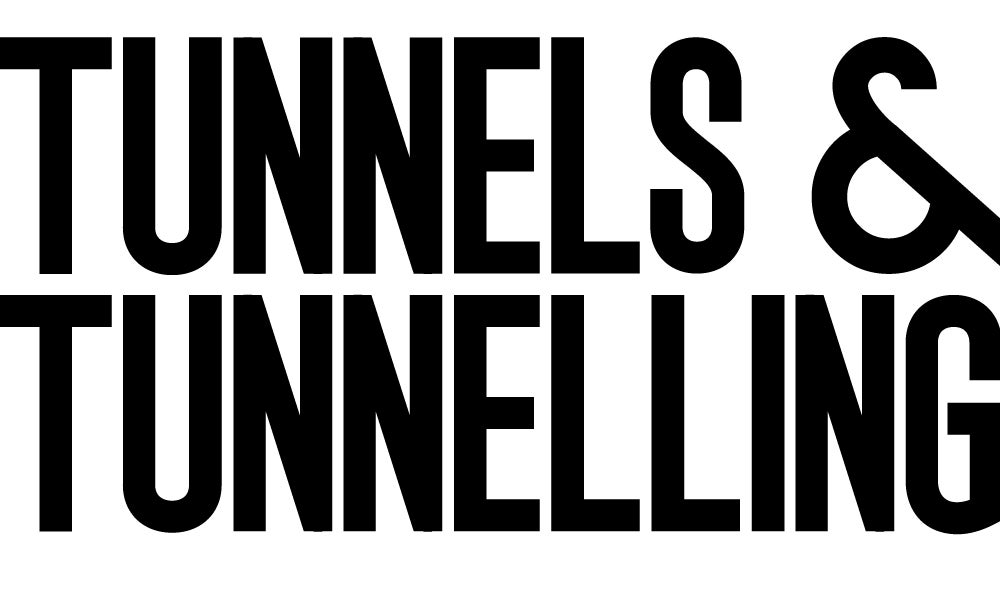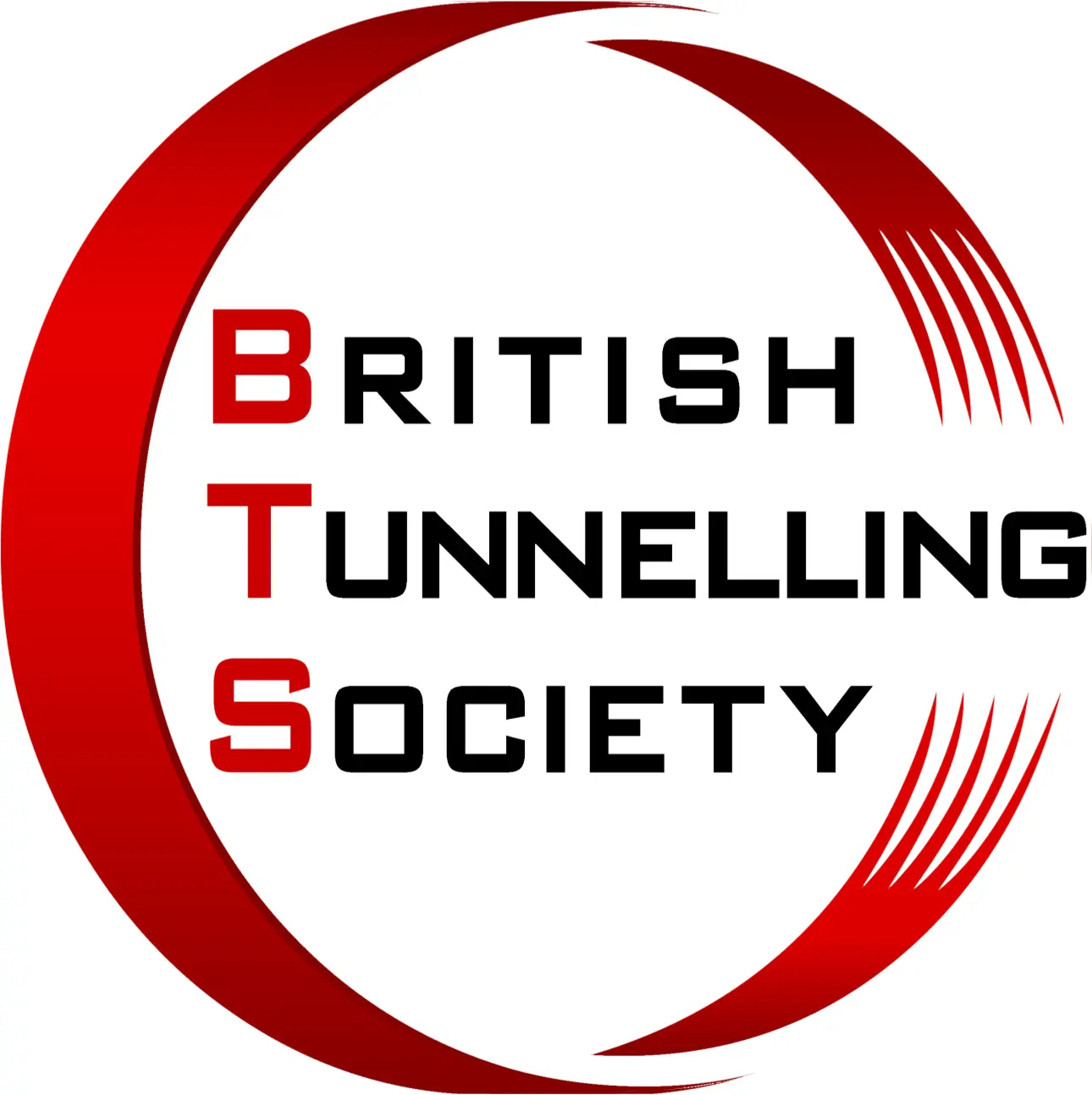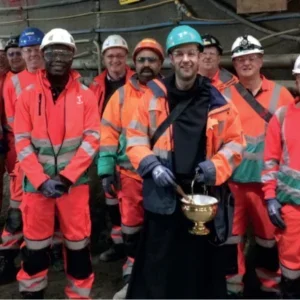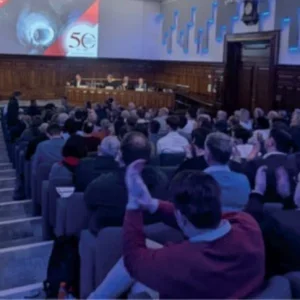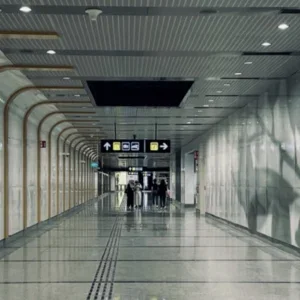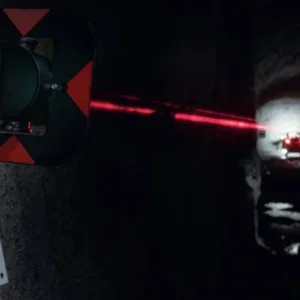Contrary to the views of many in the underground engineering community in North America, steel fibre reinforcement of segmental linings is by no means new technology. Steel fibres have been used in segmental linings as structural reinforcement and for durability reasons for over 25 years.
From the first steel fibre reinforced pre-cast tunnel lining in Italy, in 1982, projects have been constructed using steel fibre segments around the world – in the UK, Germany, Singapore, Ecuador, Brazil, Canada, New Zealand, and finally the United States.
History
The first use of steel fibres in concrete tunnel lining segments occurred in Southern Italy and Sicily. Beginning in 1982, and continuing into the 1990s, several water supply tunnels were constructed in these areas[1]. One project in particular provided major long-term benefits to Eastern Sicily, supplying much needed drinking water to some 45 villages and acting as a catalyst for promotion of growth in the region. Immediately the benefits of steel fibres, such as the elimination of spalling during push off by the TBM, were recognised.
Building on the successes attained during construction of the water tunnels in Italy, designers proposed the use of steel fibres in the Naples Metro extension[1]. Work commenced on what was known as Lotto 3 Salvator Rosa-Vanvitelli in 1992. The segment ring adopted consists of 6 segments + key with an i.d of 5.8m and a wall thickness of 300mm. The original design, using a rebar reinforcement cage of 106kg/m3, was completely replaced with 40kg/m3 of high performance steel fibre having an aspect ratio of 100. This was the first use of steel fibre concrete segmental tunnel lining in a transportation tunnel anywhere in the world.
Since these early projects, the use of steel fibre reinforced segments has gained momentum. Across the world the steel fibre solution has been used successfully in various types of tunnels and geologic conditions. It is estimated that there are more than 60 completed projects constructed with steel fibre reinforced segmental linings around the world, comprising some 450-500km of tunnels.
The UK experience
In the UK, the first project to benefit from the use of steel fibre reinforced segmental was the baggage conveyance tunnel from Terminal 4 to Terminal 1, at London’s Heathrow International Airport. Constructed by Miller Tunnelling (now Morgan Est), the 1.4km long 4.52m diameter tunnel was completed in 1994.
The original design, using a rebar reinforcement cage of 100kg/m3, was completely replaced with 30kg/m3 of high-performance steel fibres having an aspect ratio of 80. The lining thickness was also reduced from 200mm to 150mm. Full scale testing prior to start-up demonstrated that the steel fibre concrete demonstrated excellent stress redistribution and improved performance at the joints, which was enough to convince the designers to switch to steel fibres[2].
Using steel fibres sped up the manufacturing process by eliminating cage manufacturing, handling and placement. It was recognised that a savings of even a few minutes per segment allowed the moulds to be rotated quicker and therefore shortened the entire production schedule. In addition, complete reinforcement throughout the concrete section, including what was formerly the cover zone, reduced damage to the segments during manufacturing. The benefit of the steel fibre reinforcement was proven by the remarkably low damage and reject count and it was estimated that production costs were reduced by some 40%.
This first project was completed at a time when there were a lot of UK tunnels in design. Many of the designers and contractors began to investigate the potential use of steel fibres in these future projects. The list of benefits was growing and tunnel owners were beginning to recognise them also. Contract 103 of the Jubilee Line Extension (JLE) was the next tunnel to take advantage of the solution and many more followed thereafter.
One of the most high-profile projects to use steel fibre reinforced segments, was the Channel Tunnel Rail Link (CTRL) or High Speed 1 as it is now know. The rail line was officially opened on the 14 November 2007 and completes the rail link between Paris and London. Section 2 of the CTRL comprised four main sections of running tunnel, totalling 40km with a 7.15m diameter and a lining thickness of 350mm. The ring consisted of 9 segments + key. One key design criteria for the lining is a design life of 120 years. Therefore, durability was an important reason for choosing steel fibre reinforced concrete over the conventional rebar.
The segments were manufactured at three purpose-built manufacturing plants. Contracts 320 and 250 used static mould plants and contracts 220 and 240 were supplied from one carousel-type plant. Although carousel plants have a higher capital cost, they can be more efficient. The maximum production rate for contracts 220 and 240 was one segment every two minutes.
A significant benefit of using steel fibre concrete was realised by the lack of damage to the segments during production and installation. Of the 260,000 segments produced only 0.8% were rejected and 2.8% were repaired during manufacture. During construction only 2.2% suffered minor damage with no repair required, 0.3% had damage requiring a minor repair, and only one segment or 0.0004% required a major repair. None of the installed segments were required to be removed and replaced[3].
The CTRL project was the first major infrastructure project to use a steel fibre concrete segmental lining throughout the whole project. Eddie Woods, tunnel engineering manager of Rail Link Engineering (RLE), the project designers, stated: “We used steel fibres as we wanted a tunnel with a design life of over 120 years. The Thames Tunnel was to be constructed through highly saline water and with normal rebar segments there is a significant risk of corrosion and spalling concrete. The fibre reinforced segments performed excellently during construction with only one major repair required for 42km of tunnel.”
While the CTRL project was under construction a number of other tunnels were also being built using steel fibre reinforced segments. Most notable was the start of the new Terminal 5 project at London’s Heathrow International Airport incorporating extensions to both the Piccadilly Line and the Heathrow Express Rail Link. These tunnels comprise some 6km in total length.
Use of steel fibres to reinforce tunnel linings in the UK continues to this day with some designers considering rebar cage reinforcement somewhat obsolete.
The USA experience
In the USA steel fibre shotcrete for tunnelling and steel fibre concrete for industrial applications is well established. However, the steel fibre solution for segmental linings had never been used. After completion of the CTRL project, many US tunnel designers and contractors began to explore the merits of steel fibre reinforcement.
The first segmental lining project to use steel fibres is the Big Walnut Outfall Augmentation Sewer (BWOAS) – Part 2, which began in 2005 and being constructed by the McNally/Kiewit JV. This is the second part of a project to upgrade the sewer system for Columbus, Ohio. The tunnel includes 4.8km of 3.7m diameter bolted and gasketed lining and uses a combination of steel fibre reinforced concrete and a small rebar cage.
Being the first project to use steel fibres in the US, the engineers at Hatch Mott MacDonald used a conservative approach and retained a small rebar cage that was less than half the amount of original cage. Larry Lenahan, US operations manager for McNally, was the driving force behind using steel fibres. He was aware of the other tunnel projects around the world that successfully used steel fibres and he wanted to be first in the US.
This project is what has brought steel fibre reinforced segments out of the dark ages and into the light of 21st Century tunnel construction in the US, over 20 years after steel fibres were first used in segmental tunnel linings in Europe.
Five water and sewer tunnel projects quickly followed along in 2006 and 2007 after the successful BWOAS project: San Vicente, Portland East, Brightwater East, Brightwater Central and Brightwater West. In all of these projects steel fibre reinforced segments were proposed by the contractor, or precast manufacturer, to replace conventional rebar as a value engineered change.
The San Vicente Pipeline is a raw water transmission pipeline that is part of the San Diego County Water Authority’s Emergency Storage Project, in California. The pipeline links San Vicente Reservoir located on the east side of the county and the Water Authority’s 2nd Aqueduct located on the west side of the county. The project involves the construction of a 17.7km long 2.6m diameter water tunnel. For the expanded ring tunnel lining the manufacturer, Traylor Shea Ghazi Precast, proposed to redesign the segments to utilise steel fibre reinforcement.
Halcrow provided the design, eliminating the entire rebar cage and using 30kg/m3 of high-performance steel fibre reinforcement with an aspect ratio of 80. Also, since the liner did not have to be gasketed, vertical moulds were used with self-compacting steel fibre reinforced concrete. Segments were produced at an existing twin carousel plant in Littlerock, California and completed in 2006.
The Brightwater Conveyance System is part of a new regional wastewater treatment system for the suburbs of Seattle, Washington. Included are 20.4km of tunnels that vary in diameter from 4m to 5.1m. The tunnels are being constructed under three separate contracts. The East contract is awarded to Kenny/Shea/Traylor JV, Central contract awarded to Vinci/Parsons/Frontier-Kemper JV and the West contract awarded to Jay Dee/Coluccio/Taisei JV.
The segments for the three contracts are being produced by the CSI-Hanson Brightwater JV, using a state-of-the-art carousel system supplied by Cleco Manufacturing. The segments were originally designed by Jacobs Associates using conventional rebar cages but an option for the use of steel fibres was included in the bid documents. CSI-Hanson chose to produce steel fibre reinforced segments. Hatch Mott MacDonald prepared the segment design for CSI-Hanson, which resulted in using steel fibre dosages of 35kg/m3 for the East and West contracts and 40kg/m3 for the Central contract. Production started in early 2007.
Currently there are numerous tunnel projects under design and out for bid in the US. Some are being designed with steel fibres and some are not. One thing for sure, contractors will be considering steel fibres in these upcoming projects, as the benefits of fibre reinforced concrete are clear to see.
Design requirements
Segmental tunnel linings are unique structures to design because of the many different loads they must resist. Segments are exposed to bending within a few hours of casting when they are removed from moulds and stacked in curing chambers. Within 24 hours of curing, segments are stacked in matched rings for storage. Double ring stacks can include as many as 14 individual segments weighing more than 25,000kg.
The segments are then transported to the jobsite, lowered into the tunnel and placed into position with the TBM. Once in place, TBM shove forces create high, localised, bearing and splitting forces. The segments are then left to support the bored tube, imposing high compressive stresses and moderate bending stresses in the lining.
The loads applied in each step must be considered during design. It can be argued that the segment design must meet the demands of four distinct customers each with their own set of expectations. The precast manufacturer wants to produce segments as quickly and efficiently as possible requiring high early flexural strength. The contractor wants to install segments that are robust and will not spall during handling, installation and boring, requiring high splitting tensile strength. The engineer wants segments that will carry ground, hydrostatic, and potential seismic loads, requiring long-term compressive and flexural properties. The owner wants segments that will last a long time and require little maintenance. Steel fibre reinforced concrete can be designed to meet these demands.
Detailing the methods of design with steel fibres is beyond the scope of this article. Any tunnel designer worth his salt can develop load cases and compute stresses in the segments for each of the load cases. Generally stress calculation methodology follows the principles for un-reinforced concrete with slight adjustments to material factors to account for the fibres.
However, the performance of composite steel fibre concrete is what most designers do not understand. Steel fibres provide ductility to concrete. The amount or quantity of this ductility relates directly to a particular fibre type, the dosage rate of the fibre, and the concrete flexural strength. Therefore, the designer should determine the required stress level needed to resist factored design loads and specify the performance required for the composite steel fibre concrete. This is done by specifying an equivalent flexural strength (EFS) value in MPa.
During mix design the precast manufacturer decides on the concrete mix proportions to meet compressive and flexural strength requirements. Once these parameters are confirmed, the type and quantity of steel fibres is chosen to provide the specified EFS value. Bending tests on beams, in accordance with standard test methods, should then be carried out to confirm the EFS value. The designer should pay close attention to reports attesting to the performance of the mix design. This is the means of controlling the performance of the segment reinforcement.
Paramount to a sound design process is specification of a quality control regime. The designer needs to determine the level of quality to be placed on the fibre material and the quantity of tests conducted throughout the project. This is done to ensure the same performance is maintained throughout the project as was achieved in mix design development.
The tests recommended are material tests such as ASTM A 820[4] or EN 14489-1[5], to ensure fibre dimensional and tensile properties are maintained, and beam tests such as ASTM C1609[6], EN14651[7] or JSCE SF-4[8], to ensure specified EFS values are maintained. Also since tunnel projects often run for several years, consideration should be given to specifying a minimum operational history of the steel fibre manufacturer, an indication of its ability to supply quality material over a long period of time.
Conclusions
The use of steel fibre concrete in tunnel segments in the right geological conditions offers many technical and commercial advantages over rebar reinforcement cages. Crack control and the lack of explosive spalling due to corrosion are key to the long term durability of segments, properties that steel fibre concrete has demonstrated for over 25 years. Steel fibres in precast elements have been shown to be robust highly ductile products that withstand the rigours of production, transportation and placement. This provides owners with long-term durable structures.
The reinforcement of segmental linings with steel fibres is a technology that has been successfully transferred from its European roots to the US tunnel market. When the projects described herein are completed there will be over 60km of tunnel linings in the US using steel fibres for reinforcement. This represents a quantum leap in the prevailing attitude of tunnel designers in the US who claim steel fibre reinforced tunnel liners cannot be adopted as there is no design code. But design codes follow innovation rather than lead.
In the near future undoubtedly there will be building codes around the world that will incorporate the various benefits of steel fibre concrete. Until then the use of steel fibre segmental linings will be left to the innovative individuals who see their value and are willing to accept some risk for operating outside the strict boundary of codes. How much risk is there in using a solution that has been proven over 25 years?
Double stack of segments for the BWOAS project Spalling in the un-reinforced cover of a conventional segment Pushing off the CTRL segments Reduced steel cage on BWOAS Finishing the vertically cast segments on the San Vicente project Beam testing at BWOAS
